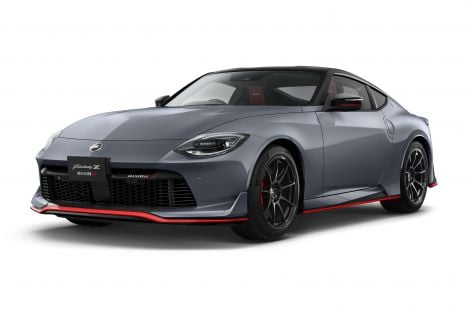

Derek Fung
Nissan Z Nismo manual revealed, facelift timing confirmed
3 Days Ago
There's no doubt the 2021 Ford Mustang GT Fastback is still an absolute charmer... but it pays to spec carefully in the world of Pony Cars.
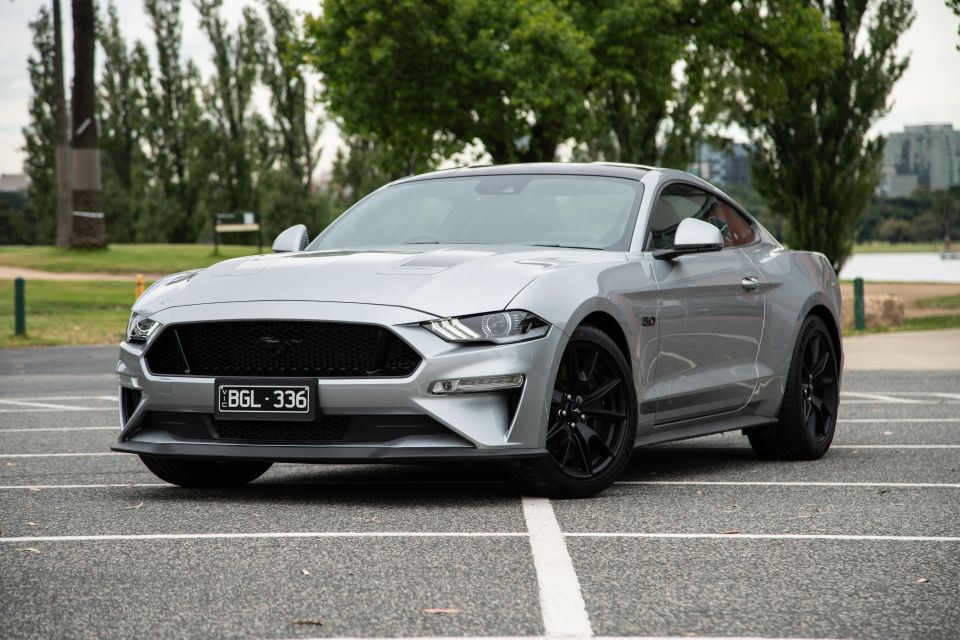
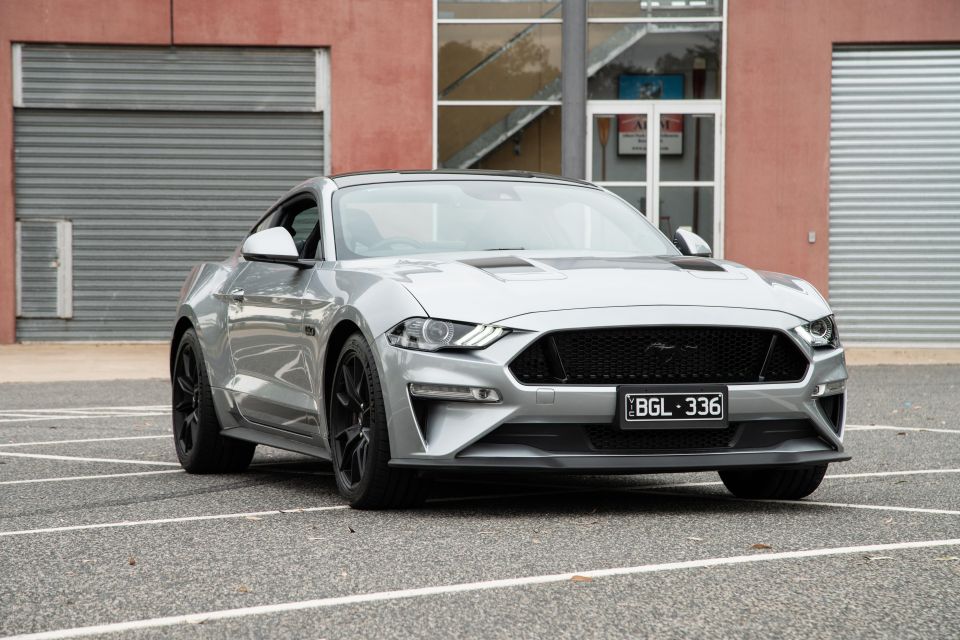

Contributor
New from
$66,690
excl. on-roads

Contributor
New from
$66,690
excl. on-roads


Contributor
New from
$66,690
excl. on-roads

Contributor
New from
$66,690
excl. on-roads
Quickly see how this car stacks up against its competition. Select any benchmark to see more details.
Where expert car reviews meet expert car buying – CarExpert gives you trusted advice, personalised service and real savings on your next new car.
The Ford Mustang is an icon.
It’s flawed but charming, fast in a straight line but slightly cumbersome in the corners. And yes, that’s still the case with the latest model, independent rear suspension and all.
So why are we bothering getting behind the wheel? Well, the Mustang story isn’t as simple as it once was.

An update in 2018 brought about a new look, new adaptive dampers as an option, and a 10-speed automatic in place of the outgoing six-speeder. Then, a 2020 refresh added the Black Pack fitted to our car here.
When the latest Mustang launched in Australia, all you needed to do was choose an engine (that’d be the V8, please), a transmission (manual, naturally) and a colour (red, thanks).
Now there’s a bit more to think about. What does the ideal Mustang look like in 2021?
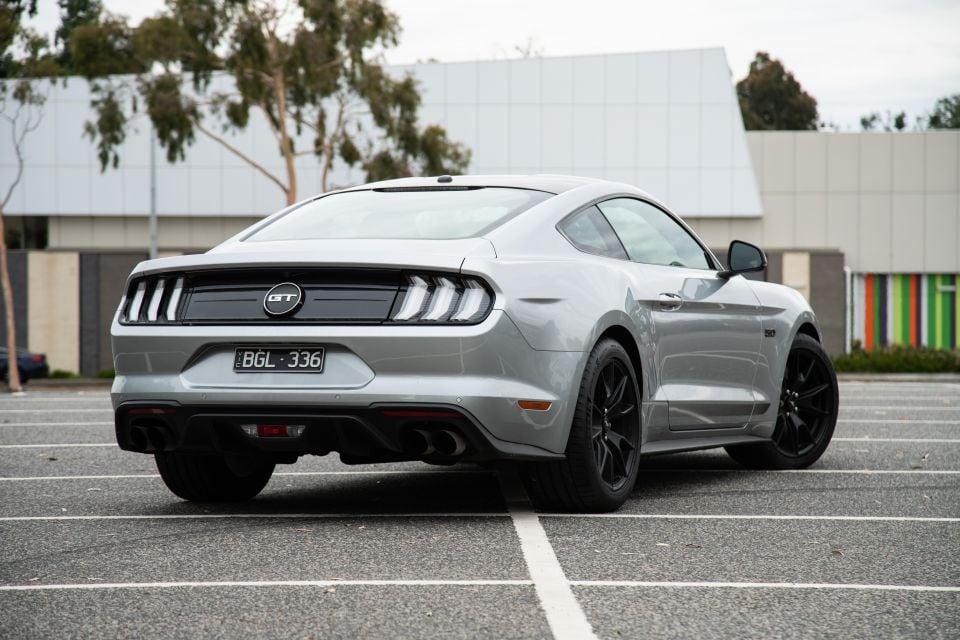
Pricing for the Mustang kicks off at $50,990 before on-road costs for the 2.3-litre High Performance, the artist formerly known as the EcoBoost, and extends to $74,890 for the V8-powered GT Convertible.
Our tester, a Mustang GT auto fastback, is priced from $66,690 before on-roads excluding options. But our before on-road costs price was actually $74,350 once you take into consideration the Black Package ($1000 for black exterior detailing, stripes, wheels), the Recaro seats ($3000 sans heating and cooling), MagneRide adaptive dampers ($2750), and silver exterior paint ($650).
Rivals are hard to find. HSV offered the Chevrolet Camaro, but the right-hand drive conversion program has ended and it’s not been confirmed as a part of the revamped General Motors Specialty Vehicles line-up.
If it’s a coupe you’re after, the BMW 4 Series kicks off at $70,900 before on-road costs but packs just 135kW and 300Nm from its four-cylinder engine, while the Audi A5 Coupe has similar outputs for a $71,900 before on-roads outlay. The rear-wheel drive Nissan 370Z can’t match the Mustang for power, but it’s similar in approach and priced from $64,490 before on-roads in flagship Nismo guise.
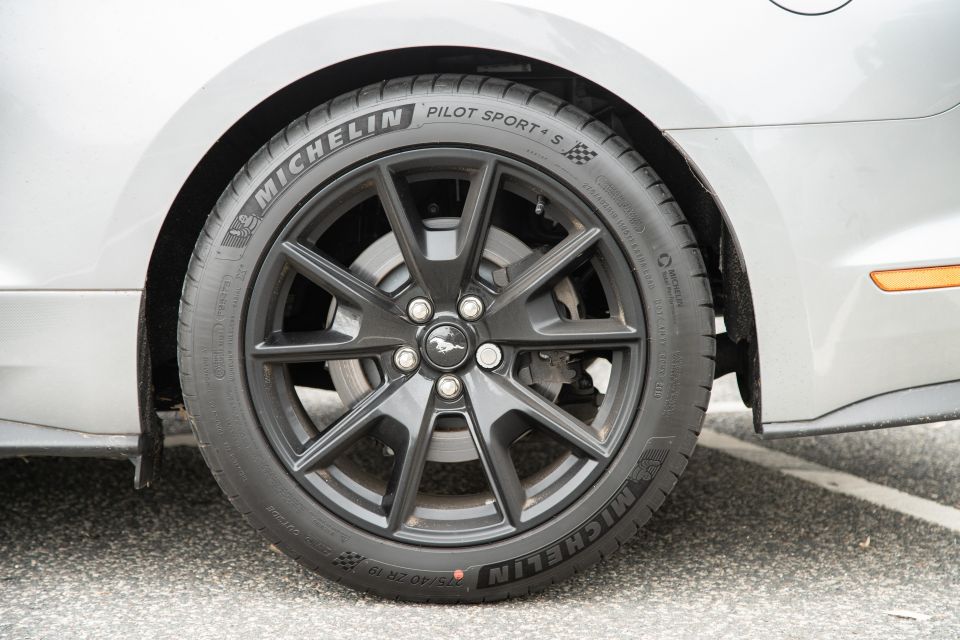
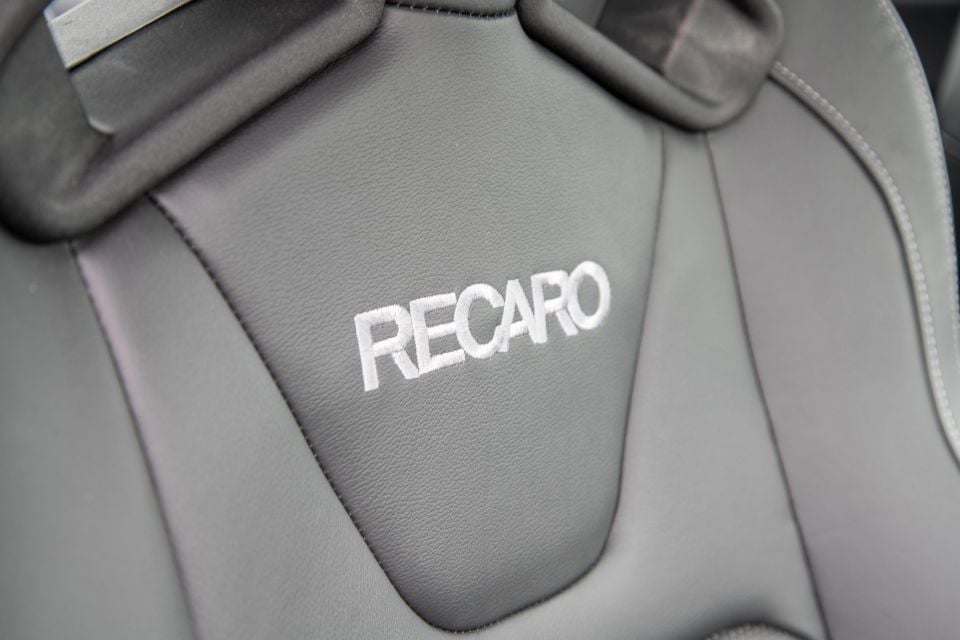
Buy your new car without the stress. It's fast, simple and completely free.

Great service from Travis and team, second time I have used this business would not hesitate to recommend them to anyone
Craig C.
Purchased a Ford Ranger in Sunshine Coast, QLD
CarExpert helped Craig save thousands on his Ford Ranger, now let us save you on your next new car.
Find a dealStandard across the Mustang range is an 8.0-inch touchscreen infotainment system and a 12.0-inch customisable driver display.
There’s wired Apple CarPlay and Android Auto, DAB+ radio, factory satellite navigation, ambient lighting, dual-zone climate control, and a 12-speaker sound system.
Access is keyless, start is by button, and there’s automatic headlights and wipers. The driver grasps a leather-wrapped steering wheel and gear knob, and the standard seats are six-way heated/cooled armchairs.
Our tester featured the optional Recaro units, however, which lose the heating and cooling but gain extra bolstering and cool factor. The car rides on 19-inch alloy wheels, breathes through an active exhaust, and is available with MagneRide adaptive dampers as a $2750 option.
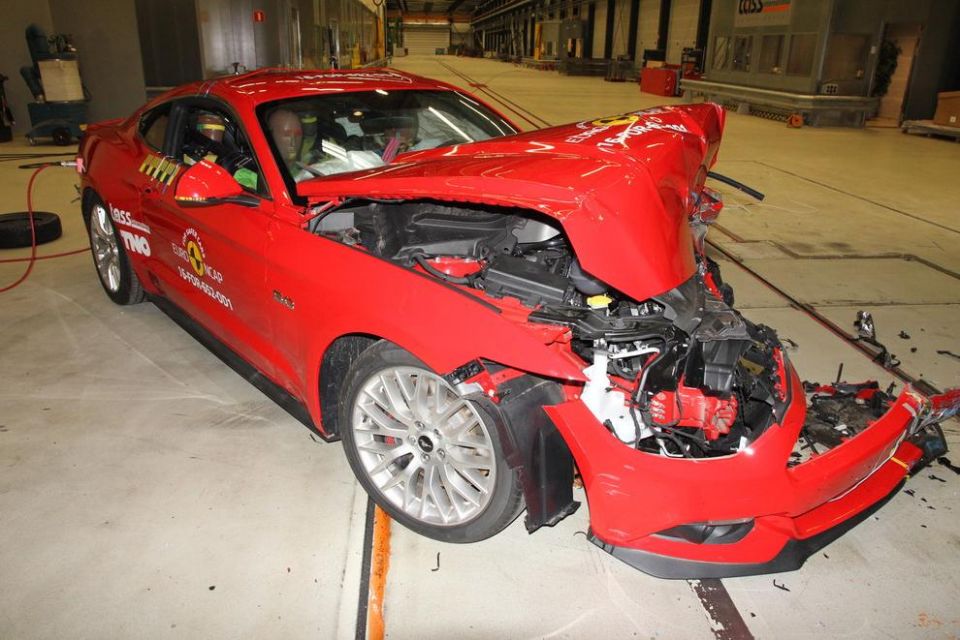
Although it’s safer than it was at launch, the Mustang only has a three-star ANCAP safety rating based on testing carried out in 2017.
That rating is based on an adult occupant protection score of 72 per cent, child occupant protection of 32 per cent, pedestrian protection of 78 per cent and safety assist of 61 per cent.
Front, front-side, curtain and driver’s knee airbags are standard range-wide.
All 2021 Ford Mustang models come standard with the following active safety features:
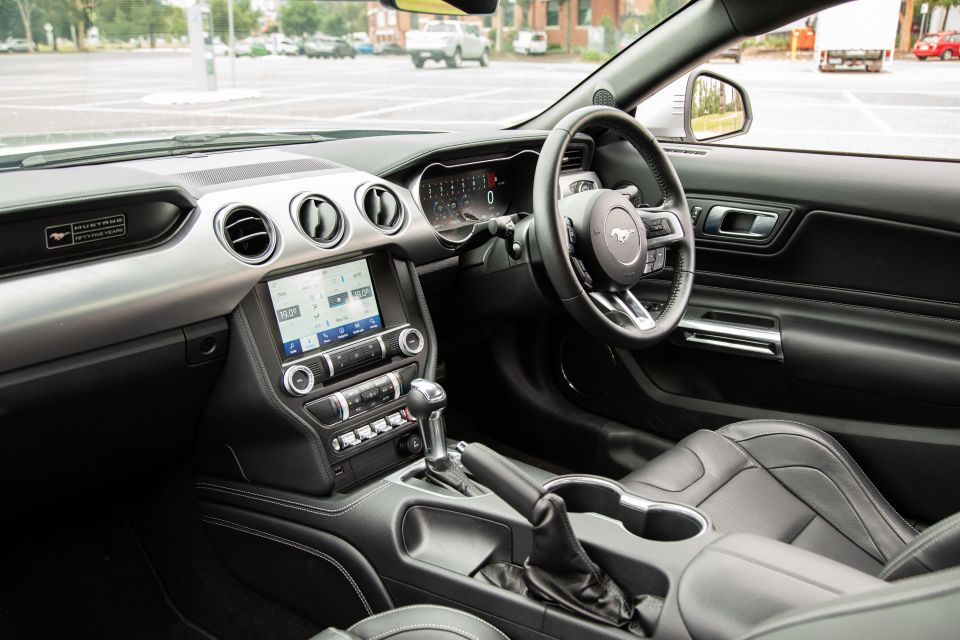
Ford has gone big on retro style and big on modern tech in the Mustang, but it necessarily hasn’t backed it up with the quality we’ve come to expect of a circa-$70,000 car.
The good? I mean, just look at it. The twin-cowl dashboard is nostalgia porn, and the triple air vents are just cool. Ditto the rocker switches at the base of the dashboard, retro-styled steering wheel, and broad piece of aluminium trim facing the passenger.
Ford has nailed the technology in the Mustang. The Sync 3 infotainment system might not have the biggest screen in the business nor headline features like wireless smartphone mirroring, but it’s among the cleanest, easiest-to-use systems in the business.
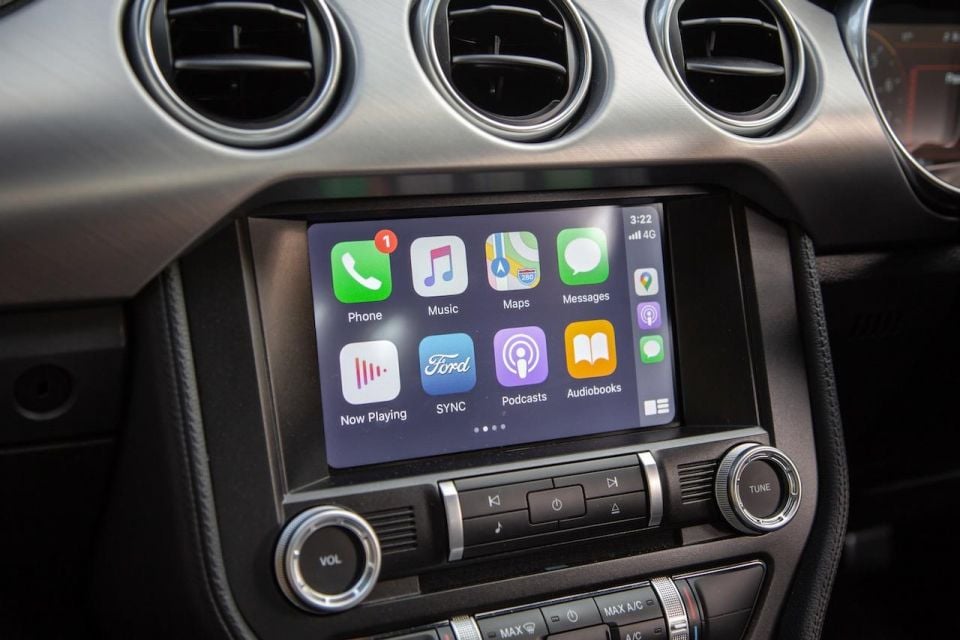
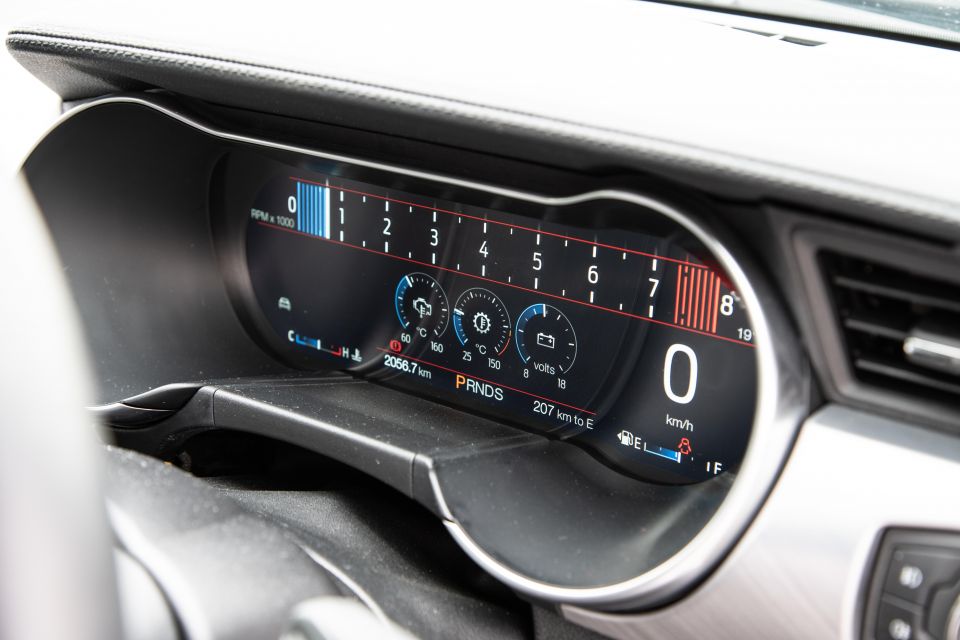
The native voice control has a brilliant grasp of our Australian drawl, and there are hard buttons on the dashboard to skip from media to navigation, for example. Forget diving through menus, it’s all there and easy to access.
Also excellent is the digital instrument binnacle. All three layouts scream ‘Muscle Car’ without looking kitschy or overblown, and there’s a great balance of information and clarity.
With simple steering wheel controls, it’s easy to dive into the menus to fiddle with the exhaust, traction control, or drive mode.
You can have virtual dials with information about your oil pressure, battery voltage, and intake temperatures, or you can keep things simple with a basic trip computer. The clean ‘Track’ dials with a big, horizontal rev counter is the coolest to these eyes, but you can’t go wrong.
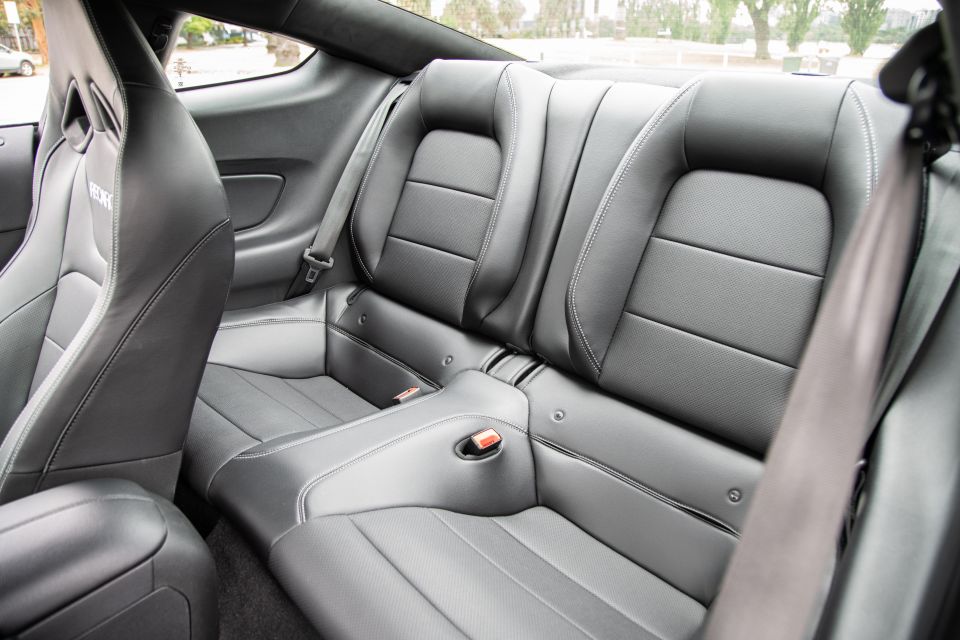
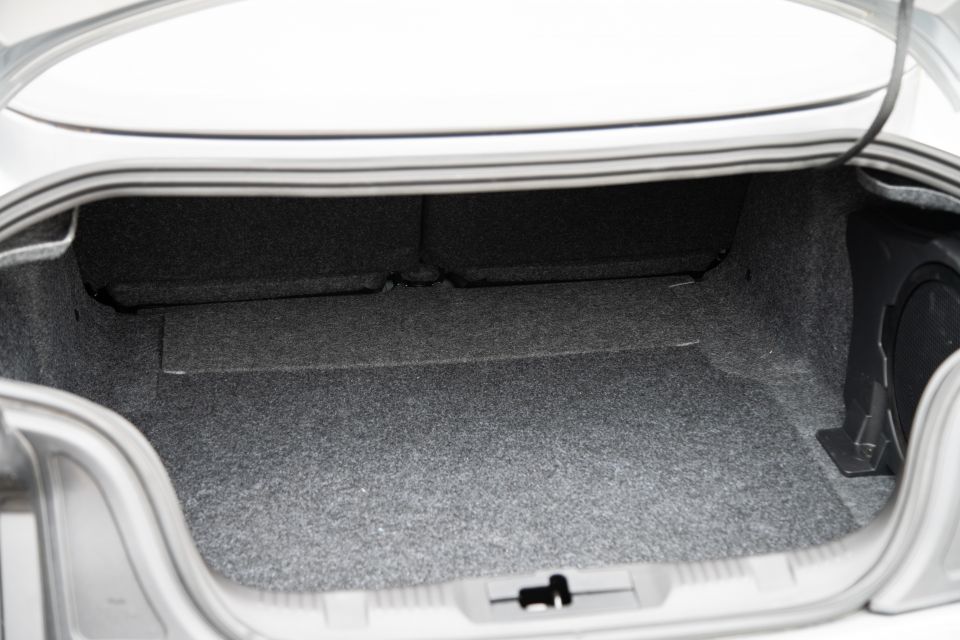

The Mustang is a big car, which means there’s heaps of space for lanky drivers up front. My six-seven frame fits comfortably, although the Recaro seats hug broad-backed drivers maybe a bit too tightly. The fact they rub and squeak against the back seats in their rearmost position is a pain, too.
Storage space is plentiful, from the long door pockets to the massive bin under the central armrest.
Rear space is… less plentiful. That’s generous; it’s pretty damn poor.
Even short passengers will bash their heads on the rear glass, legroom is questionable even behind short drivers, and access is tight despite the ‘Stang featuring long doors that make getting out in tight supermarket carparks an exercise best carried out by contortionists.
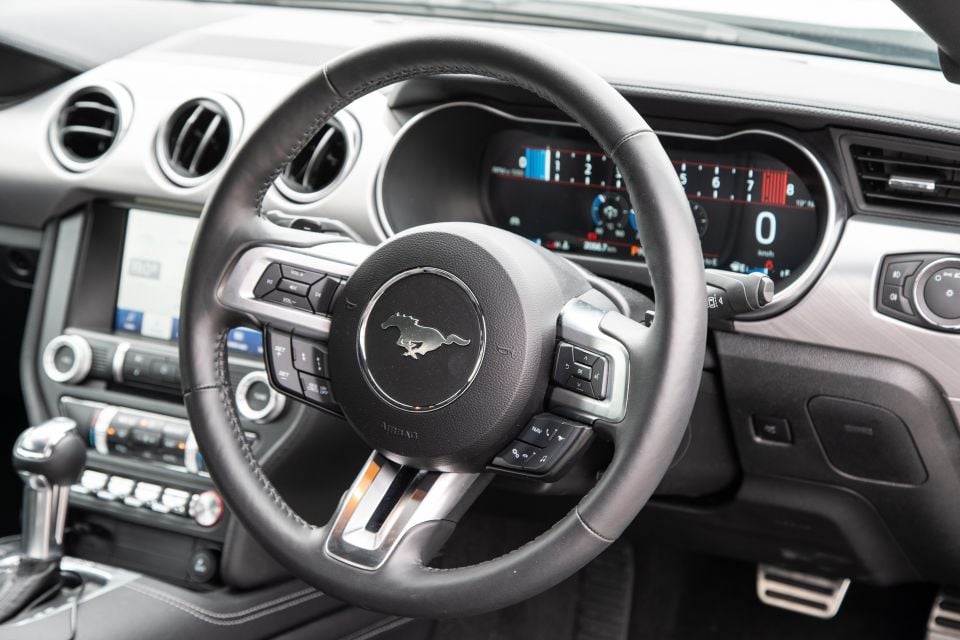

Boot space is an impressive 408L with the rear seats upright, but they actually fold 50/50 to house longer items.
So far, so good then. But the Mustang falls down when you start to really poke and prod. The rocker switches on the dashboard are one-way, for example, not proper rockers that would make it easier to scroll through the car’s various drive modes.
The plastics used for the centre console are hard and scratchy, and the black trim in front of the passenger flexes under even light pressure. It’s not meant to be a BMW, we realise that, but surely Ford could have made the Mustang feel better than it does.
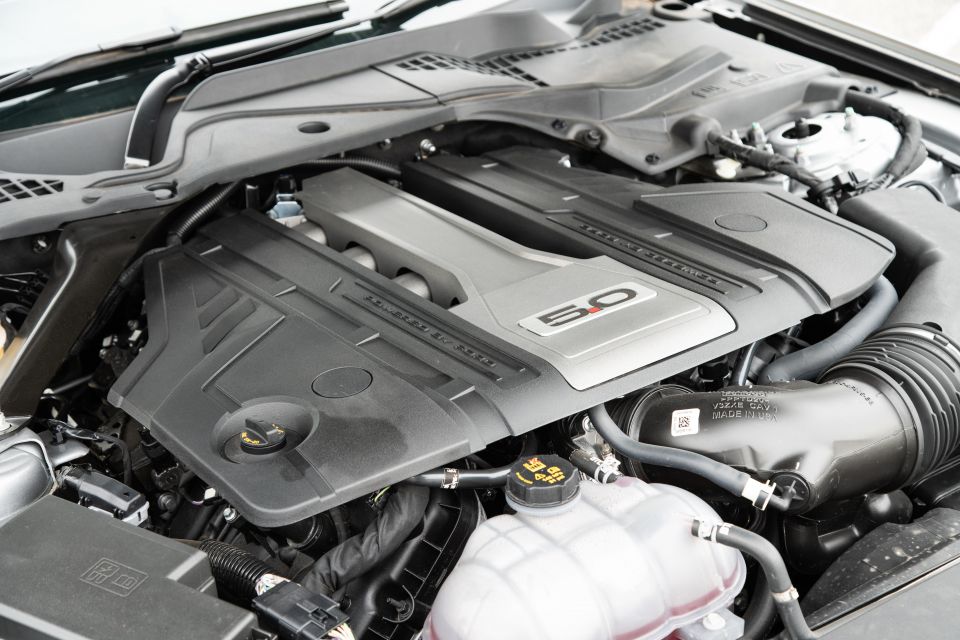
Although you can get a 2.3-litre turbocharged EcoBoost engine in the Mustang, the one you want is the GT with its hulking, snarling 5.0-litre naturally-aspirated V8.
It puts out 339kW of power and 556Nm of torque, sent to the rear wheels through a choice of six-speed manual or 10-speed automatic transmissions.
Claimed fuel economy is (deep breath) 12.7L/100km on the combined cycle, and what we saw over our week with the car was in the 13L/100km ballpark.
But it doesn’t really matter, because this isn’t exactly being cross shopped with the Toyota Prius or Nissan Leaf.
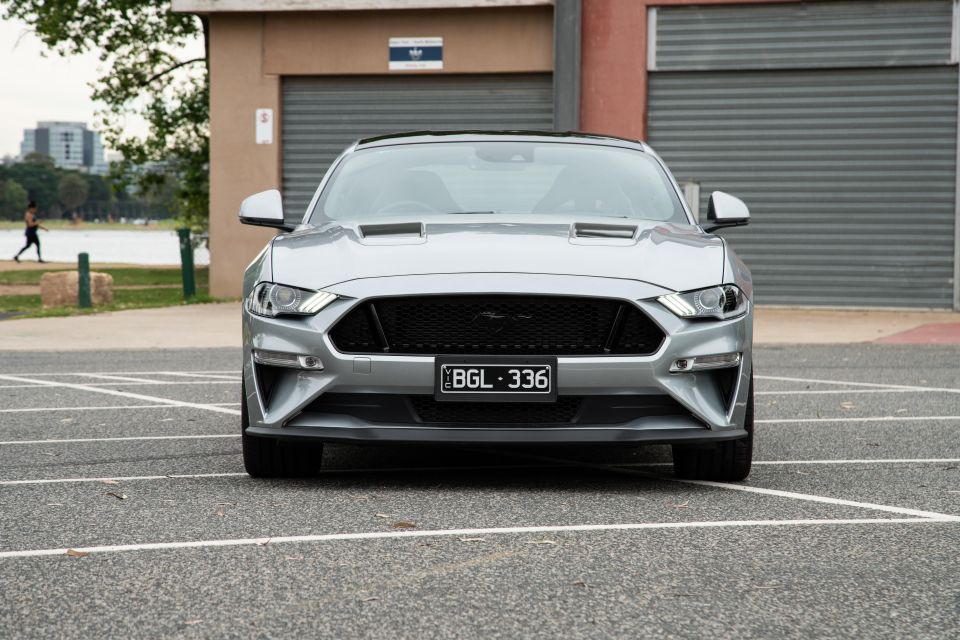
It’s big, brash, and dominated by that V8 engine. It’s a Mustang, then.
Prod the start button and it bursts into life with a bassy flourish, before settling into a slightly wub-wub-wobbly idle. The pre-update Mustang was a bit too quiet, the latest model makes all the right noises.
Sure, you can start it in Quiet mode to keep the neighbours happy, but the real fun comes in Racetrack mode where the engine can really roar. Ford says it’s for “racetrack use only” but that feels more like a suggestion than an order.
The noise isn’t the only reminder you’re piloting a proper muscle car. You sit low and stare out over an impossibly long, ridged bonnet, and the controls are heavier than they are in a Fiesta ST or Puma.
Lean on the throttle and the Mustang burbles smoothly away, automatic transmission shuffling quickly from first into third, fifth, and then seventh gear at speeds as low as 50km/h.
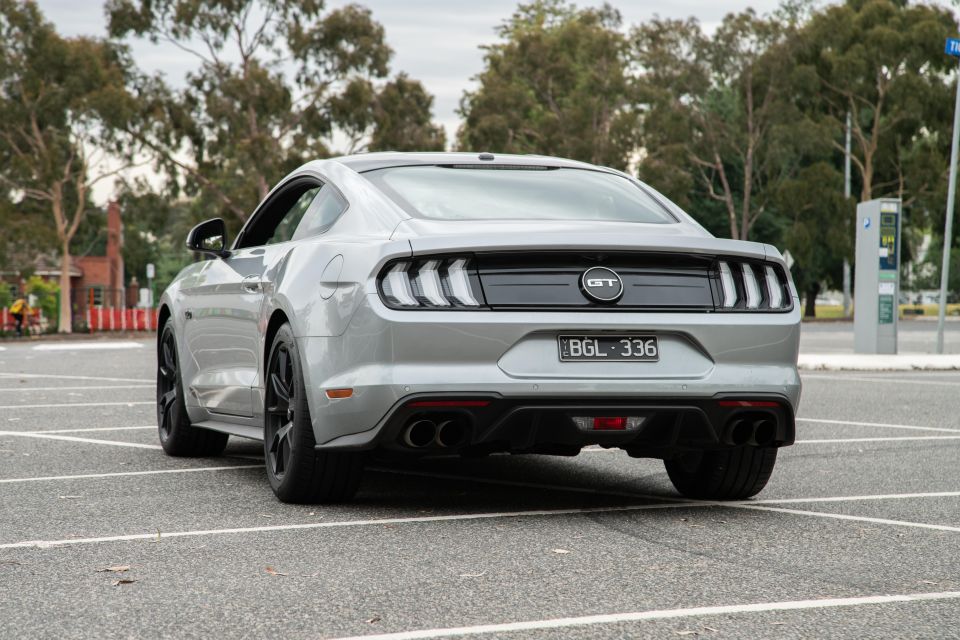
It’s way too busy, constantly second guessing itself and trying to skip ratios. Pulling out of junction it went from first to third, before dropping back to second when I leaned harder on the throttle and then skipping into fourth.
It even tried to jump from first to third at less than 10km/h coming up a steep driveway, only to splutter and shift jerkily back down.
You’re always a gear too high at a cruise, so the sense of lazy, effortless acceleration you’re meant to get from a Mustang at speed is replaced by stuttering downshifts.
Ford’s latest, greatest transmission makes more sense in the Ranger bi-turbo, where it’s tasked with keeping a small-displacement engine in its sweet spot, but it’s just unnecessary paired with such a torquey, tractable bent-eight that realistically needs about three gears.
Taking charge with the plastic paddles behind the helps somewhat, but responses aren’t what you’d call eye-blink quick, even in Sport Plus.
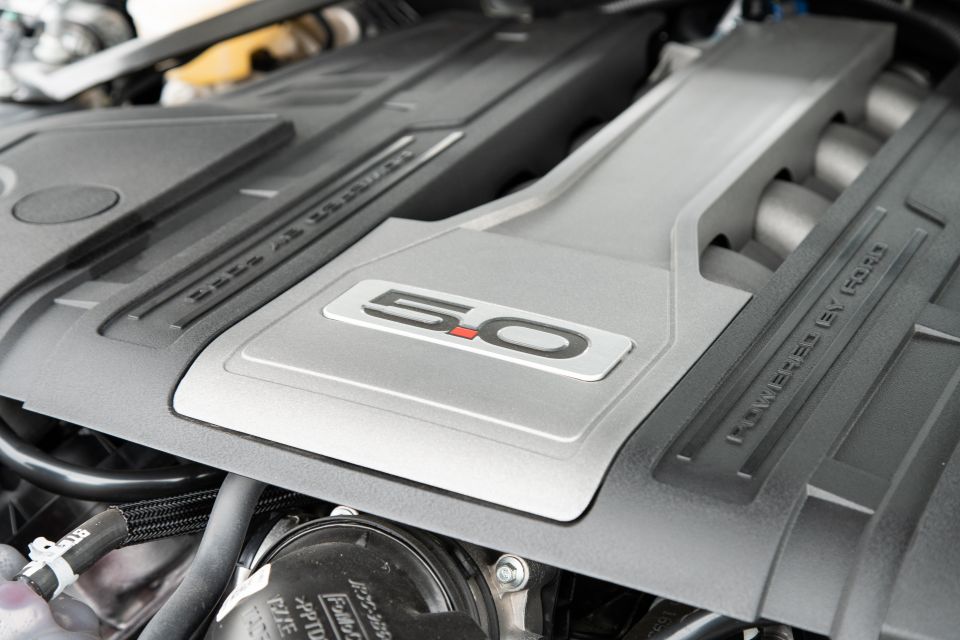
It’s a real shame because the Coyote V8 is a truly brilliant engine. It’s torquey down low, but it’s no lazy or old-fashioned V8. Instead, it happily rips to the redline, encouraging the driver to get stuck in.
Wondering why the Mustang is so popular? If the sharp looks weren’t enough, the engine is charming as hell.
Ford put a real focus on handling with the latest Mustang, and there’s no doubt it’s a better steer than its predecessors. The 2018 update saw further changes, including the change from Pirelli rubber to expensive Michelin Pilot Sport 4S tyres, to further refine the formula.
Although it’s still a big, heavy car, the Mustang doesn’t fall over when you show it a set of corners. The hefty steering is linked with a nose that goes mostly where you ask it – provided you don’t let its significant mass get away from you and try to carry too much speed – and it’s possible to carve neat lines if you’re gentle with the throttle.
There’s no escaping the rear-wheel drive-ness of it all though. Ask for more from the big V8 and there’s always the sense oversteer is an option… and we wouldn’t have it any other way. This is a muscle car that goes around corners, but it’s still a muscle car.
Dial things back and the Mustang is happy burbling around town. Body control is taut even in the loosest damper setting but it feels purposeful rather than uncomfortable, and once you’re attuned to the length of the bonnet and width of the hips it’s not hard to slice through the urban jungle.
Where this Pony is most comfortable, though, is when you let it loose on the highway. Engine ticking over barely above idle, long nose pointed at the horizon, it feels like you’re driving through a movie.
Road, wind, and engine noise are kept in check, and the ride is excellent once you hit highway speeds. All that’s left to do is kick back and pretend you’re Steve McQueen.
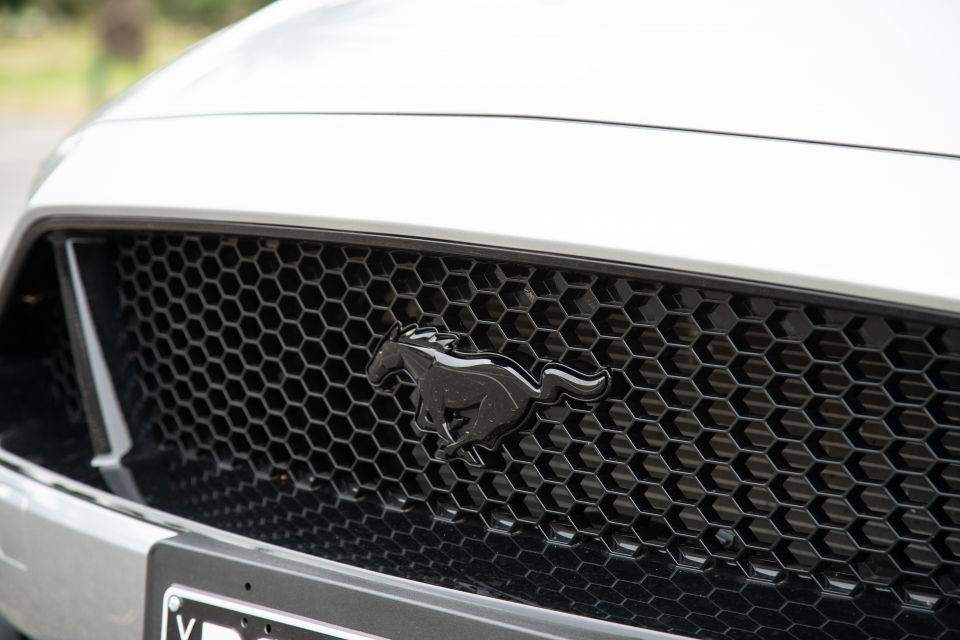
Where expert car reviews meet expert car buying – CarExpert gives you trusted advice, personalised service and real savings on your next new car.
The Mustang is backed by Ford’s five-year, unlimited-kilometre warranty and requires maintenance every 12 months or 15,000km.
Capped-price servicing means the first four trips to the dealer won’t set you back more than $299 each.
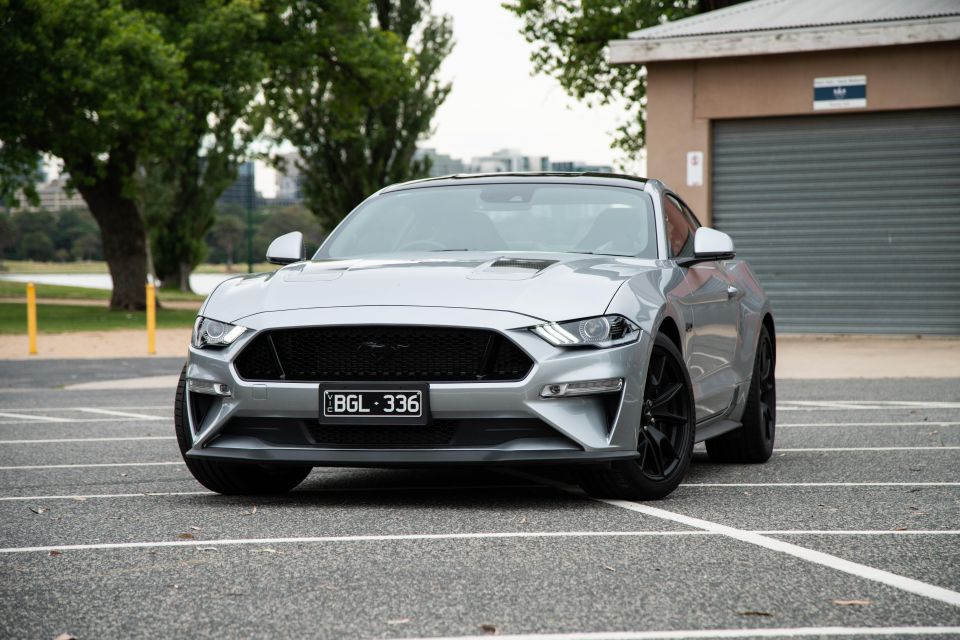
There’s no question the Mustang is still a charmer, but the spec on test here doesn’t shine it in its best light.
For starters, the manual is unquestionably the transmission to have. It’s a good idea on paper, but the automatic has too many ratios and is simply too indecisive to do the engine any justice.
Second, you want the adaptive dampers in your Mustang. Finally, if you’re broad-backed steer clear of the Recaro seats.
Get the spec right and you’re in for some serious fun, and plenty of looks on the road. Even five years after launch the Mustang is a head-turner, and the way that V8 engine sounds will always put a smile on your face.
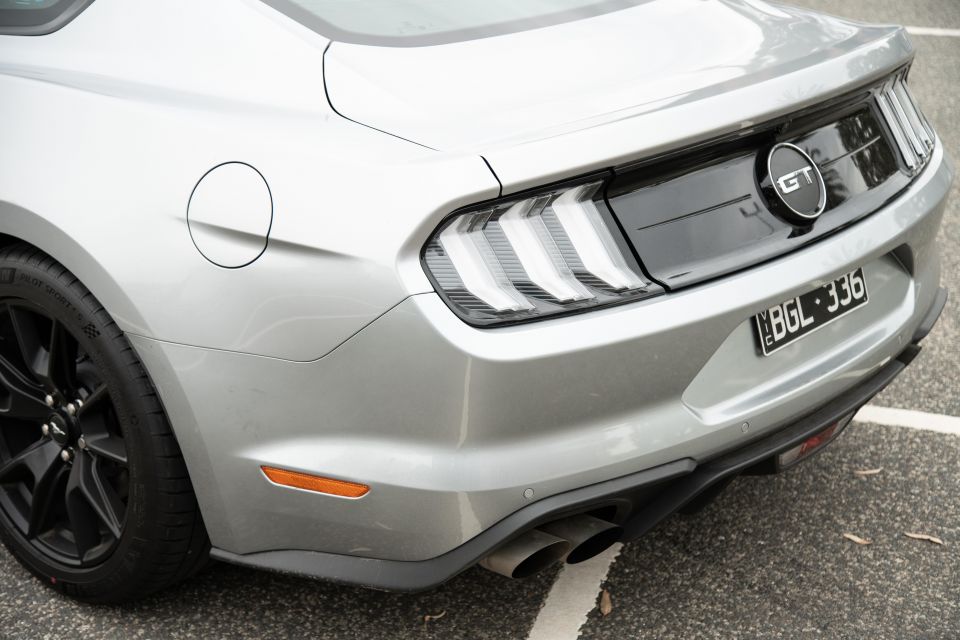
Click the images for the full gallery
MORE: Ford Mustang news and reviews MORE: Everything Ford
Where expert car reviews meet expert car buying – CarExpert gives you trusted advice, personalised service and real savings on your next new car.
Scott Collie is an automotive journalist based in Melbourne, Australia. Scott studied journalism at RMIT University and, after a lifelong obsession with everything automotive, started covering the car industry shortly afterwards. He has a passion for travel, and is an avid Melbourne Demons supporter.


Derek Fung
3 Days Ago
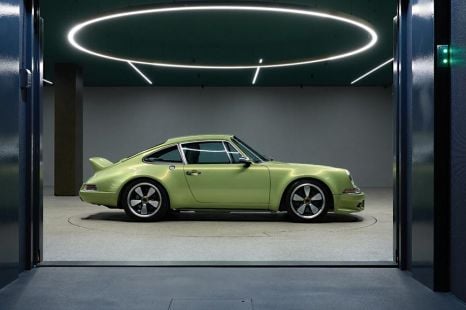

Marton Pettendy
19 Days Ago
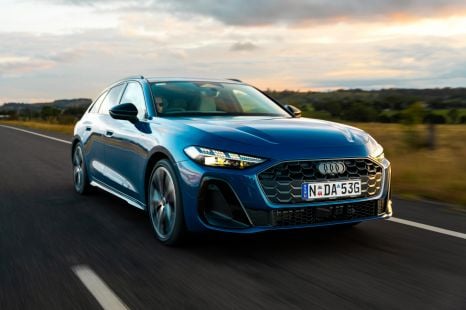

James Wong
27 Days Ago


Damion Smy
28 Days Ago
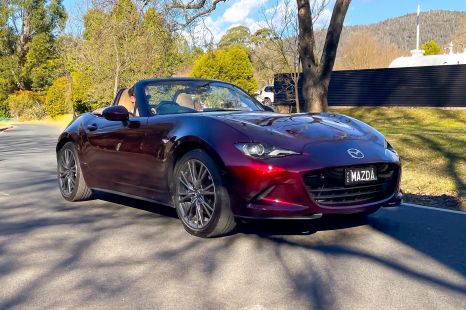

Josh Nevett
1 Month Ago
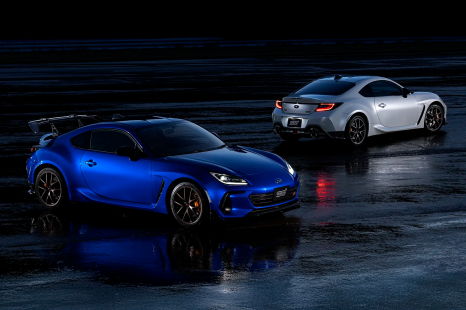

Max Davies
1 Month Ago